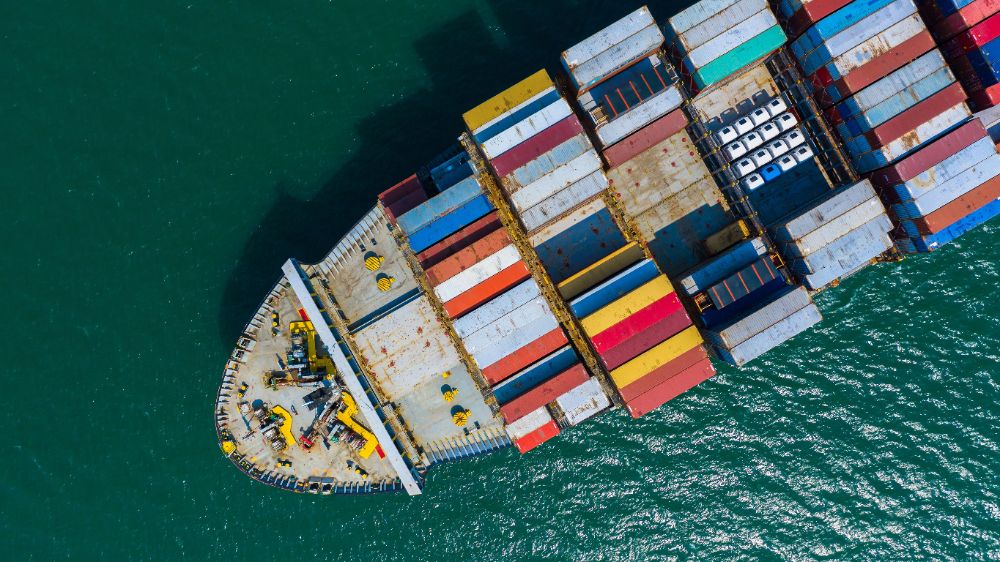The Changing Global Trade Story
Global trade is no longer just about moving goods at the lowest cost. It is being reshaped by politics, security, and sustainability goals. What was once a relatively smooth flow of goods is now marked by tariffs, border checks, and disrupted sea routes.
- Trade wars are back on the table. The US has raised tariffs on electric vehicles, solar products, and semiconductors to protect its industries and reduce dependence on China.
- Climate rules are now trade rules. The EU’s Carbon Border Adjustment Mechanism (CBAM) means exporters must declare and pay for carbon embedded in their goods.
- Conflicts and chokepoints (Russia–Ukraine war, Middle East tensions, Red Sea attacks) are disrupting supply chains, increasing freight costs, and causing delays.
Why India Finds Itself in a Unique Spot
In this uncertain world, India stands out as both vulnerable and promising.
- A large domestic market makes India attractive as both a supplier and consumer base.
- PLI schemes have drawn global manufacturers in electronics, EVs, and renewables.
- A strong IT and services backbone integrates R&D and digital capabilities with manufacturing.
Yet, challenges remain such as high logistics costs, CBAM compliance, and gaps in upstream manufacturing like semiconductors and critical minerals.
Global Landscape – Trade Wars & Protectionism
US – China Tariff Wars
- EVs: 100% tariff
- Solar: 50% tariff
- Chips: 50% by 2025
- Supply chain diversification toward India, Vietnam, and Mexico
EU’s Carbon Border Adjustment Mechanism (CBAM)
- Transition: 2023–2025
- Full rollout: 2026
- Exporters face rising compliance costs
Global Protectionism
IMF warns protectionist measures may drag global GDP growth by 0.3–0.5% annually.
Why It Matters for Emerging Markets – India Focus
Risks
- Possible loss of US/EU market access
- Freight cost spike due to Red Sea disruption (↑130%)
- High compliance burden (carbon reporting, traceability)
Opportunities
- Friend-shoring shifts boosting India (Apple assembled $22B iPhones in FY24)
- PLI + domestic market scale attracting FDI
- Total exports FY25: $820.9B
Geopolitical Conflicts & India’s Economy
Russia–Ukraine War
- Russia supplies 35% of India’s crude (from <2% earlier)
- Defense imports from Russia reduced from 55% to 38%
- Food prices rose due to edible oil disruptions
Middle East & Red Sea Tensions
- Shipping delays: +10–14 days
- Freight: +25–30%
- Middle East supplies 48.5% of India’s oil
Taiwan Strait Tensions
- Taiwan makes 60% of global chips
- India imports 65% of chips
- India launched ₹76,000 crore Semiconductor Mission
India’s Economic Position – Trade Snapshot (FY24–25)
Opportunities
- Services exports offset merchandise weakness
- MSMEs as growth engine
- Diversification toward UAE, ASEAN, Africa
Key Numbers
- Total Exports: US$ 820B+
- Merchandise: US$ 437B+
- Services: US$ 387B+
Risks
- Partner dependence
- Merchandise weakness widening deficit
Growth Drivers for India
1. Services Exports – The Global Edge
India’s services exports reached US$ 387.5B in FY24-25, driven by IT, cloud, AI, fintech, and GCC expansion.
2. Manufacturing Push – Make in India & PLI
- Manufacturing GVA grew 11.9% in FY24
- Electronics, auto, pharma driving growth
- PLI disbursal slow (~8% funds used)
3. Managing Import Dependence
- Energy: 85% crude oil imported
- Chips: 65% imported
- Defense: Imports falling due to Atmanirbhar policy
Negative Impacts on India
1. Export Vulnerability
US + EU = 32% of India’s export market.
US tariffs (2025) may cut order volumes by 70% for key sectors.
2. Commodity & Inflation Shocks
Oil import dependence (88.2%) fuels inflation.
3. Investment & Business Uncertainty
4. Strategic Dependence on China
- Electronics imports: $21.4B
- Pharma APIs: 70% from China
Positive Impacts on India
China+1 Opportunity
Massive investments from Apple, Foxconn, Micron & others.
Energy Diversification
Russia supplies 35%+ of crude; India ranks 4th in renewables.
Strategic Partnerships
Quad, UAE CEPA, global tech partnerships strengthening India.
Services Export Growth
IT, consulting, GCCs expanding rapidly.
Sectoral Impact Analysis
Manufacturing
- Electronics exports: $29B
- Textile export risks from CBAM
- Auto components exports: $22B
Pharmaceuticals
Generics exports: $25B+; high API dependence on China.
Energy
Crude oil imports high; renewable push strong.
Defense
Imports falling; exports rising (₹21,000 crore).
Services
IT exports: $200B+; GCC expansion strong.
Outlook for India
Short-Term
- Inflation pressures
- Commodity shocks
- Export disruptions
Medium-Term
- FDI inflows expected to rise
- Gulf & ASEAN partnerships expanding
Long-Term
- Manufacturing share may reach 6% of global output
- UPI & digital exports rising
- India poised to become 3rd largest economy by 2030
Policy & Strategic Recommendations
Government
- Accelerate FTAs
- Build semiconductor & electronics capacity
- Improve logistics & ports
- Reduce China dependence
Industry
- Diversify export markets
- Multi-country sourcing
- Focus on R&D & automation
- Explore EV, green energy, and digital exports
Conclusion
Global trade and geopolitical shocks bring risks and opportunities for India. While vulnerabilities—especially in energy, electronics, and pharmaceuticals—remain, India is uniquely positioned to benefit from global supply chain shifts, services export growth, renewable energy expansion, and strategic partnerships.
If India can balance domestic reforms with global integration, it can emerge not just as an alternative but as a core pillar of the global economy in the coming decades.

